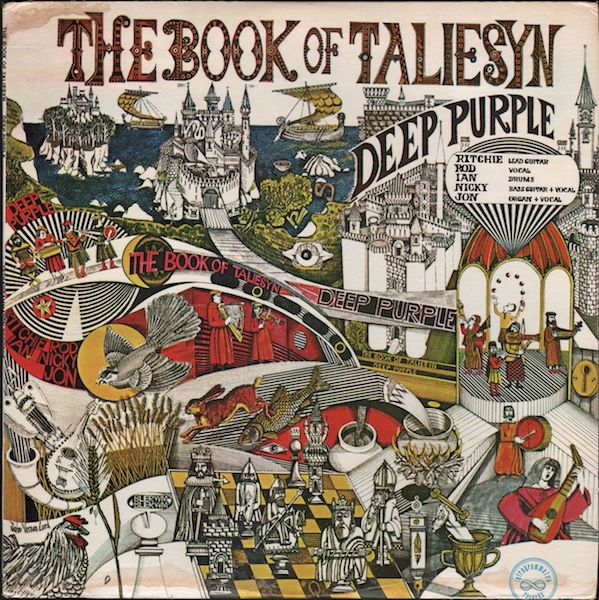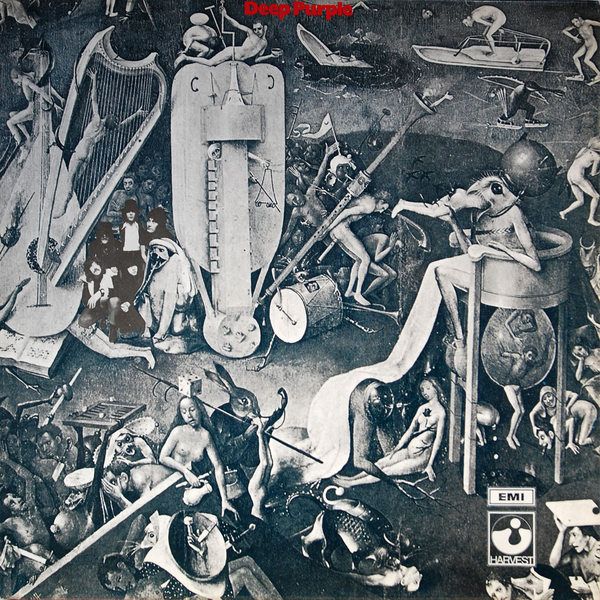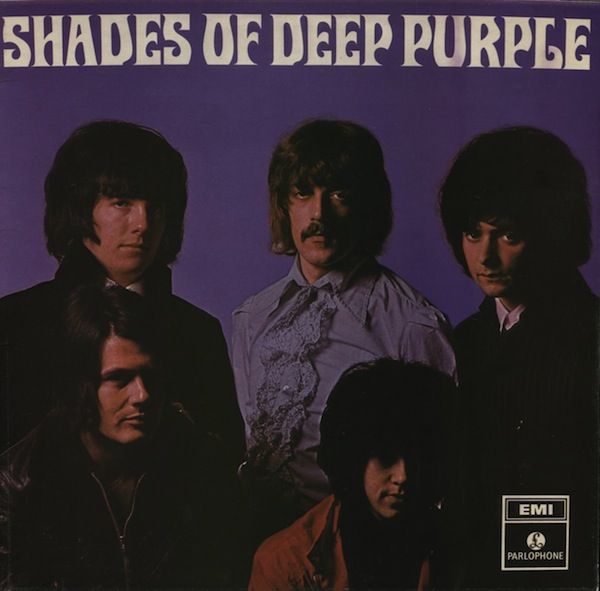
Exposé Online
What's old
Exposé print issues (1993-2011)
- 1 (October 1993)
- 2 (February 1994)
- 3 (May 1994)
- 4 (August 1994)
- 5 (October 1994)
- 6 (March 1995)
- 7 (July 1995)
- 8 (November 1995)
- 9 (March 1996)
- 10 (August 1996)
- 11 (February 1997)
- 12 (May 1997)
- 13 (October 1997)
- 14 (February 1998)
- 15 (July 1998)
- 16 (January 1999)
- 17 (April 1999)
- 18 (November 1999)
- 19 (May 2000)
- 20 (October 2000)
- 21 (March 2001)
- 22 (July 2001)
- 23 (December 2001)
- 24 (April 2002)
- 25 (September 2002)
- 26 (February 2003)
- 27 (August 2003)
- 28 (December 2003)
- 29 (April 2004)
- 30 (September 2004)
- 31 (March 2005)
- 32 (September 2005)
- 33 (May 2006)
- 34 (March 2007)
- 35 (January 2008)
- 36 (October 2008)
- 37 (July 2009)
- 38 (July 2010)
- 39 (Summer 2011)
Reviews
Deep Purple — The Book of Taliesyn
(Eagle Records ER202222, 1968/2000, CD)
Deep Purple — Deep Purple
(Eagle Records ER202232, 1969/2000, CD)
Deep Purple — Shades of Deep Purple
(Eagle Records ER202242, 1968/2000, CD)
by Peter Thelen, Published 2000-10-01



While most are familiar with songs like “Smoke on the Water,” “Woman from Tokyo,” and “Highway Star,” those hits were produced by the second edition of the band; few know of the band’s origins as a post-British Invasion beat group in the late 60s. The band at that time won zero recognition in their native England and only received some notoriety with the hit single “Hush” in the US (and a less successful follow-on cover of Neil Diamond’s “Kentucky Woman”). Indeed, in these formative years Deep Purple sported a different frontman, Rod Evans (who would later be unceremoniously booted from the lineup to later join Captain Beyond) and bassist Nic Simper. These three remasters, each generous with bonus tracks, stand as a testament to the band’s origins and early persona. Enough with history now, and on to the music.
While originality was not always their forté early on, what ideas they (ahem) “borrowed”, they always improved upon greatly, so when one hears their first hit “Hush,” a Hammond-crunchy hard-rocking version of an otherwise forgettable Joe South song with the main theme a direct rip of The Beatles’ “A Day in the Life,” one can easily forgive the transgression. Likewise, the better part of the first album is extensively re-worked and often improved upon cover tunes (“I’m So Glad,” “Help,” “Hey Joe”) mixed with original material mostly penned by guitarist Richie Blackmore and / or organist Jon Lord, with lyrics by Evans. The sound throughout could be characterized as a late-60s hard rock style embellished with a strong Hammond organ presence. There are plenty of gems herein, including the proto-progressive instrumental “Prelude: Happiness,” and the smoker “Mandrake Root,” an original tune which borrows heavily from Hendrix’ “Foxey Lady.” Their extended Vanilla Fudge-esque version of the Beatles’ “Help” is also worthy of note.
Recorded only months after the debut (one US tour later to be precise), The Book of Taliesyn shows plenty of growth in compositions, arrangements, and overall group cohesion. It also marks the emergence of Blackmore as an up-and-coming guitarist to be reckoned with, as evidenced on many of the tracks herein, but no more so that the group-penned instrumental “Wring That Neck,” a fast-tempo bluesy number that gives everyone in the band room to stretch out. Lord’s Hammond playing remains the backbone of their sound, and as before, there are a number of extended, rearranged cover tunes: the aforementioned “Kentucky Woman,” “We Can Work It Out,” and a ten-plus minute version of “River Deep, Mountain High” originally popularized by Ike and Tina Turner. The remaining original compositions stand much stronger in comparison to the first album, one highlight being another proto-progressive instrumental “Exposition.”
The third eponymous album was a major step forward on all fronts, but is probably the least known of the three, due to timing, lack of tour support, and the collapse of their US label, Tetragrammaton. By this time the band had progressed well beyond their post-beat origins to a promising early hard-rock progressive sound. For one thing — with the exception of an extensively reworked version of Donovan’s “Lalena” in a vocal style that would later be employed on the classic “Child in Time” — the album is comprised entirely of original compositions. Here they began to show some of the forward looking sensibilities on tracks like “Why Didn’t Rosemary” and “The Painter” that would later find full bloom on albums like In Rock and Fireball. “Bird Has Flown” sports a solid post-psych Who-ish flavor with a catchy melodic hook, but the highlight of the album (at least to fans of progressive rock) will be the twelve minute suite “April,” an ambitious multi-part opus with extensive orchestration that would point the way to the band’s fourth album, Concerto for Group and Orchestra. Also included in the bonus tracks is the single “Emmaretta” (both studio and BBC versions) that never seemed to find its way onto the LP. If one only has the wherewithal to go for one of these three discs, this is the one. In all, a refreshing look back at the early days of this pioneering British band.
Filed under: Reissues, Issue 20, 2000 releases, 1968 recordings, 1969 recordings
Related artist(s): Deep Purple
What's new
These are the most recent changes made to artists, releases, and articles.
- Review: Zabrahana - Whales Dream in Purple
Published 2026-01-02 - Review: McLuhan - Anomaly
Published 2026-01-01 - Review: Ektör - Ektöristan
Published 2025-12-31 - Release: Chatte Royal - Mick Torres Plays Too F***ing Loud
Updated 2025-12-30 15:33:15 - Artist: Chatte Royal
Updated 2025-12-30 15:32:15 - Release: Olly Chalk - In Those Remote Stars
Updated 2025-12-30 14:01:10 - Artist: Olly Chalk
Updated 2025-12-30 13:59:56 - Review: Pietro Zollo - The Future Is Now
Published 2025-12-30 - Release: Dhope - Musical Exhibitions
Updated 2025-12-29 23:00:53 - Release: Tin Pan Alley - Tin Pan Alley
Updated 2025-12-29 22:51:10 - Release: Jeff Pearce - Infinite Ambient: Winter Landscapes
Updated 2025-12-29 22:33:12 - Release: Trio of Bloom - Trio of Bloom
Updated 2025-12-29 17:19:40 - Artist: Trio of Bloom
Updated 2025-12-29 17:16:50 - Artist: Craig Taborn
Updated 2025-12-29 17:02:15 - Release: Family - Old Songs, New Songs
Updated 2025-12-29 00:03:41 - Review: The Kirkbys - It's a Crime: The Complete Recordings
Published 2025-12-29 - Release: Various Artists - Psychedelic Underground 20
Updated 2025-12-28 23:33:26 - Artist: Dhope
Updated 2025-12-28 23:27:49 - Artist: Tin Pan Alley
Updated 2025-12-28 23:21:39 - Release: Various Artists - Psychedelic Underground 19
Updated 2025-12-28 23:04:15
